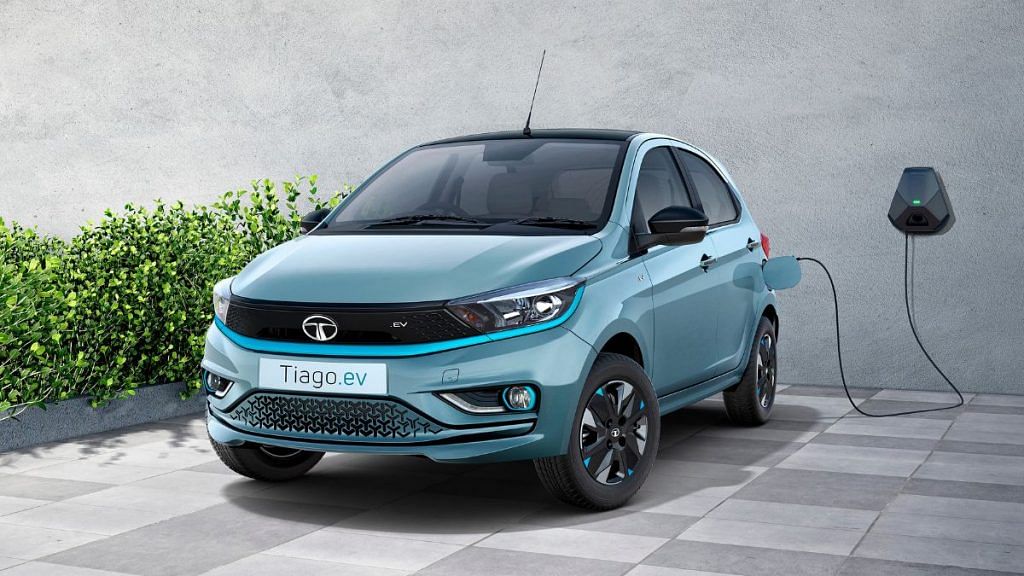Recently, Tata Motors announced that they had built their 50,000th electric vehicle. The success of Tata Motors’ electric passenger car business has been spectacular over the past few years. Little wonder then when Tata Motors spun off the division, it was valued at $9 billion. After having driven the Tata Nexon EV and the Tigor EV, I realised that they are both perfectly functional city commuter vehicles. And it is no surprise that the recent launch of an electric version of the Tiago hatchback—with an attractive introductory ex-showroom price of Rs 8.5 lakh—has already managed to excite customers.
With these three vehicles, it is clear that Tata Motors dominates the EV segment in India. Nine out of every 10 electric passenger cars sold in the country don the Tata badge, after all. And while all these cars are retrofitted examples of regular petrol versions, both Tata Motors and Mahindra have showcased the vehicles that will underpin their electric dreams of tomorrow. French automobile manufacturer Citroën is already testing a battery-electric version of their C3 hatchback and plans to launch it early next year. If well-priced, it could really help Citroën make inroads into the Indian EV market.
Also read:
A booming EV segment
Kia has already launched the EV6, with deliveries starting a couple of weeks ago. Meanwhile, Hyundai plans to launch its award-winning Ioniq 5, which is backed by the Electric Global Modular Platform (E-GMP). Hyundai E-GMP is a dedicated platform for the Korean carmaker’s EVs. The E-GMP platform will also underpin a more affordable ‘made In India’ electric car from Korean companies come 2024-25. Maruti-Suzuki and Toyota are also working together to launch their battery-electric vehicle around a similar timeframe, as will Škoda-Volkswagen.
The luxury segment, too, is brimming with some spectacular EVs like the Mercedes-Benz EQS, whose AMG variant I drove recently, and the BMW i4, which is a 3-series with a battery pack and drives just as well. Audi is constantly adding new vehicles to its e-tron range which means 2023 will see the Q8 e-tron and possibly the Q4 e-tron.
Also read: Why electric scooters are catching fire & should this really make you worry about EVs
Many roadblocks to electrification
So, the industry has stepped up, and the issue is no longer one of consumer choice. In my September Dashboard column, I had argued that your next car should be electric. Unfortunately, after talking to several EV owners over the past few months, it has become apparent that there are still far too many potholes on the road to electrification right now. Yes, the road still leads to a zero-emissions future, but some major issues need to be addressed before moving in that direction, and the answers won’t come easy.
One critical issue in India remains the back end of our electricity grid. While most people take it for granted, the electrical grid is one of our most amazing creations. And as India’s economy is predicted to grow hugely in the next decade, this grid will come under increasing pressure after years of little to no investment by State-owned power distribution companies. The heat wave that occurred in China a few months ago should be a cautionary lesson to policymakers in India. The demand for more power, not just for vehicles, is going to be a massive problem that India will have to address because the short-term solution for that power is to burn more coal.
And there are more practical problems. The owner of an MG ZS EV told me that charging is a major problem for him since his residential society in Gurugram has not allowed him to install his own charging point. The state electricity board supplies power in bulk to many such societies in Gurugram, and many of these housing complexes have not allowed residents to establish private car charging points.
While there are various reasons for this move, one could be that societies want to ‘sell’ power to EV owners at highly elevated prices. But the core problem becomes one of the grid, and also about transmitting renewable energy to cities, which will make running EVs greener. Wind and solar power farms have come up in areas far from the major demand centres and solutions such as high-voltage direct current lines will have to be deployed to transmit greener power to cities. And those new transmission lines are expensive.
@kushanmitra is an automotive journalist based in New Delhi. Views are personal.
(Edited by Zoya Bhatti)
